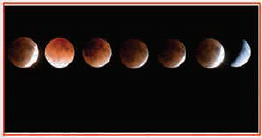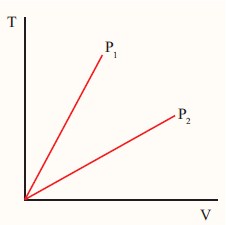- State Board
-
12th Standard
-

Biology
-

Computer Applications
-

Computer Science
-

Business Maths and Statistics
-

Commerce
-

Economics
-

Maths
-

Chemistry
-

Physics
-

Computer Technology
-

History
-

Accountancy
-

Tamil
-

Maths
-

Chemistry
-

Physics
-

Biology
-

Computer Science
-

Business Maths and Statistics
-

Economics
-

Commerce
-

Accountancy
-

History
-

Computer Applications
-

Computer Technology
-

English
12th Standard stateboard question papers & Study material
தமிழ் Subjects
English Subjects
-
-
11th Standard
-

Maths
-

Biology
-

உயிரியல் - தாவரவியல்
-

Economics
-

Physics
-

Chemistry
-

History
-

Business Maths and Statistics
-

Computer Science
-

Accountancy
-

Commerce
-

Computer Applications
-

Computer Technology
-

Tamil
-

Maths
-

Commerce
-

Economics
-

Biology
-

Business Maths and Statistics
-

Accountancy
-

Computer Science
-

Physics
-

Chemistry
-

Computer Applications
-

History
-

Computer Technology
-

Tamil
-

English
11th Standard stateboard question papers & Study material
தமிழ் Subjects
English Subjects
-
-
9th Standard
-

-

-

-

-

-

-

Maths
-

Science
-

Social Science
-

Maths
-

Science
-

Social Science
9th Standard stateboard question papers & Study material
தமிழ் Subjects
English Subjects
-
-
6th Standard
-

Maths
-

Science
-

Social Science
-

Maths
-

Science
-

Social Science
6th Standard stateboard question papers & Study material
தமிழ் Subjects
English Subjects
-
-
10th Standard
-

Maths
-

Science
-

Social Science
-

Tamil
-

Maths
-

Science
-

Social Science
-

English
-

English
10th Standard stateboard question papers & Study material
தமிழ் Subjects
English Subjects
-
-
7th Standard
-

Maths
-

Science
-

Maths
-

Science
-

Social Science
7th Standard stateboard question papers & Study material
தமிழ் Subjects
English Subjects
-
-
8th Standard
-

கணிதம் - old
-

Science
-

Social Science
-

கணிதம்
-

Maths
-

Science
-

Social Science
8th Standard stateboard question papers & Study material
தமிழ் Subjects
English Subjects
-
-
12th Standard
- CBSE Board
-
12th Standard CBSE
-

Biology
-

Chemistry
-

Physics
-

Maths
-

Accountancy
-

Business Studies
-

Economics
-

Introductory Micro and Macroeconomics
-

Computer Science
-

Geography
-

English
-

History
-

Indian Society
-

Physical Education
-

Sociology
-

Political Science
-

Engineering Graphics
-

Bio Technology
-

Entrepreneurship
-

Hindi Elective
-

Home Science
-

Legal Studies
-

Psychology
-

Hindi Core
-

Tamil
12th Standard CBSE Subject Question Paper & Study Material
-
-
11th Standard CBSE
-

Physics
-

Mathematics
-

Chemistry
-

Biology
-

Economics
-

Business Studies
-

Accountancy
-

Computer Science
-

English
-

Geography
-

History
-

Physical Education
-

Psychology
-

Sociology
-

Bio Technology
-

Enterprenership
-

Hindi
-

Home Science
-

Political Science
-

Applied Mathematics
11th Standard CBSE Subject Question Paper & Study Material
-
- 10th Standard CBSE
-
9th Standard CBSE
-

Social Science
-

Mathematics
-

Science
-

English
-

Hindi
9th Standard CBSE Subject Question Paper & Study Material
-
-
8th Standard CBSE
-

Social Science
-

Science
-

Mathematics
-

English
8th Standard CBSE Subject Question Paper & Study Material
-
-
7th Standard CBSE
-

Social Science
-

Science
-

Mathematics
-

English
7th Standard CBSE Subject Question Paper & Study Material
-
-
6th Standard CBSE
-

Social Science
-

Science
-

Mathematics
-

English
6th Standard CBSE Subject Question Paper & Study Material
-
-
12th Standard CBSE
- Free Online Test
- News
- Study Materials
-
Students
-

Stateboard Tamil Nadu
-

CBSE Board
-

Free Online Tests
-

Educational News
-

Scholarships
-

Entrance Exams India
-

Video Materials
Study Materials , News and Scholarships
-
-
Students
Revision Model Question Paper 2
11th Standard
-
Reg.No. :
Physics
Time :
03:00:00 Hrs
Total Marks :
70
-
Dimensions [M L-1T-1] are related to_____________
(a)torque
(b)work
(c)energy
(d)Coefficient of viscosity
-
Which one of the following physical quantities cannot be represented by a scalar?
(a)Mass
(b)length
(c)momentum
(d)magnitude of acceleration
-
The position vector of a particle is \(\vec r=4t^2\hat i+2t\hat j+3t\hat k\) . The acceleration of a particle is having only ___________.
(a)X-component
(b)Y-component
(c)Z-component
(d)X-Y component
-
An object of mass m held against a vertical wall by applying horizontal force F as shown in the figure.The minimum value of the force F is(a)Less than mg
(b)Equal to mg
(c)Greater than mg
(d)Cannot determine
-
No force is required for ____________.
(a)an object moving in circular motion.
(b)an object moving in straight line with constant velocity.
(c)an object moving with constant acceleration.
(d)an object moving in elliptical pattern
-
A particle moves from a point \((-2\vec i+5\vec j)\) to \((4\vec j+3\vec k)\) when a force of \((4\vec i+3\vec j)N\) is applied. How much work has been done by the force?
(a)8 J
(b)11 J
(c)5 J
(d)2 J
-
From a disc of radius R a mass M, a circular hole of diameter R, whose rim passes through the center is cut. What is the moment of inertia of the remaining part of the disc about a perpendicular axis passing through it
(a)15MR2/32
(b)13MR2/32
(c)11MR2/32
(d)9MR2/32
-
Two blocks of masses 20 kg and 5 kg are connected by a spring of negligible mass and placed on a frictionless horizontal surface. An impulse gives a velocity of 15 m/s to the heavier block in the direction of lighter block. The velocity of centre of mass is _____________.
(a)22 ms-1
(b)30 ms-1
(c)12 ms-1
(d)15 ms-1
-
The kinetic energy of the satellite orbiting around the Earth is
(a)equal to potential energy
(b)less than potential energy
(c)greater than kinetic energy
(d)zero
-
Escape velocity of a body of 1 kg. On a planet is 100 ms-1. Gravitational potential energy of the body at the planet is _______.
(a)-5000 J
(b)- 1000 J
(c)- 2400
(d)4000 J
-
With an increase in temperature, the viscosity of liquid and gas, respectively will
(a)increase and increase
(b)increase and decrease
(c)decrease and increase
(d)decrease and decrease
-
1 mole of a gas with \(\gamma =\frac { 7 }{ 5 } \) is mixed with 1 mole of gas with \(\gamma =\frac { 5 }{ 3 } \) then value of g of the resulting mixture is ____________.
(a)\(\frac { 7 }{ 5 } \)
(b)\(\frac { 2 }{ 5 } \)
(c)\(\frac { 3 }{ 2 } \)
(d)\(\frac { 12 }{ 7 } \)
-
The average translational KE. of O2(molar mass 32) molecules at a particular temperature is 0.048 eV. The translational KE. of N2(molar mass 28) molecules in eV at the same temperature is ________
(a)0.0015
(b)0.003
(c)0.048
(d)0.768
-
A pendulum is hung in a very high building oscillates to and fro motion freely like a simple harmonic oscillator. If the acceleration of the bob is 16 ms−2 at a distance of 4 m from the mean position, then the time period is
(a)2 s
(b)1 s
(c)2\(\pi\)s
(d)\(\pi\)s
-
An organ pipe A closed at one end is allowed to vibrate in its first harmonic and another pipe B open at both ends is allowed to vibrate in its third harmonic. Both A and B are in resonance with a given tuning fork. The ratio of the length of A and B is
(a)\(\frac{8}{3}\)
(b)\(\frac{3}{8}\)
(c)\(\frac{1}{6}\)
(d)\(\frac{1}{3}\)
-
Name three units to measure extremely large distances.
-
What is the reading shown in spring balance?
-
Why is it much easier to balance a meter scale on your finger tip than balancing on a match stick?
-
A particle of mass 10g is kept on the surface of a uniform sphere of mass 100 kg and radius 10 cm, Find the work to done against the gravitational force between them to take the particle is away from the sphere.
-
Two steel wires of lengths 1 m and 2 m have diameters 1 mm and 2 mm respectively. If they are stretched by forces of 40 N and 80 N respectively, find the ratio of their elongations
-
Define molar specific heat capacities.
-
Deduce Avogadro’s law based on kinetic theory.
-
Write down the equation of time period for linear harmonic oscillator.
-
What do you mean by phase of a wave?
-
Suppose two trains A and B are moving with uniform velocities along parallel tracks but in opposite directions. Let the velocity of train A be 40 km h-1 due east and that of train B be 40 km h-1 due west. Calculate the relative velocities of the trains.
-
A body of 3.5 kg in acted upon by two forces of magnitudes 3N and 5N making an angle of 90° with each other. Calculate the magnitude if net acceleration experience by the body is?
-
Consider an object of mass 2 kg moved by an external force 20 N in a surface having coefficient of kinetic friction 0.9 to a distance 10 m. What is the work done by the external force and kinetic friction? Comment on the result. (Assume g = 10 ms-2)
-
Derive an expression for work done by Torque?
-
The following photographs are taken from the recent lunar eclipse which occurred on January 31, 2018. Is it possible to prove that Earth is a sphere from these photographs?

-
Explain why:
(a) a body with large reflectivity is a poor emitter.
(b) a brass tumbler feels much colder than wooden tray on a chilly day. -
The following graph shows a V-T graph for isobaric processes at two different pressures. Identify which one occurs at higher pressure.

-
Write down the postulates of kinetic theory of gases.
-
Derive the relation between Intensity and loudness
-
-
State Newton's three laws and discuss their significance.
-
A transverse harmonic wave on a string is described by y(x, t) = 5.0 sin (48t + 0.0264x + ), where x and y are in cm and t in sec. The positive direction of x is from left to right.
(a) What are its amplitude and frequency?
(b) What is the least distance between two success in crests in the wave?
-
-
-
Derive the expression for gravitational potential energy.
-
Discuss in detail the energy in simple harmonic motion.
-
-
-
Define Torque and derive its expression.
-
Find the adiabatic exponent \(\gamma\) for mixture of μ1 moles of monoatomic gas and μ2 moles of a diatomic gas at normal temperature (27°C).
-
-
-
What is inelastic collision? In which way it is different from elastic collision. Mention few examples in day to day life for inelastic collision.
-
Distinguish between isothermal and adiabatic process.
-
-
-
Derive the kinematic equations of motion for constant acceleration.
-
Obtain an expression for the excess of pressure inside a
i) liquid drop
ii) liquid bubble
iii) air bubble.
-
Part I
Answer all the questions.
Choose the most suitable answer
from the given four alternatives and write the option code with the
corresponding answer.
15 x 1 = 15
Part II
Answer any 6 questions.
Question no. 24 is compulsory.
6 x 2 = 12
Part III
Answer any 6 questions. Question no. 33 is compulsory.
6 x 3 = 18
Part IV
Answer all the questions.
5 x 5 = 25






 11th Standard Physics Syllabus
11th Standard Physics Syllabus  11th Standard Physics Study Materials
11th Standard Physics Study Materials 11th Standard Physics MCQ Practise Tests
11th Standard Physics MCQ Practise Tests 

Reviews & Comments about 11th Physics - Revision Model Question Paper 2
Write your Comment